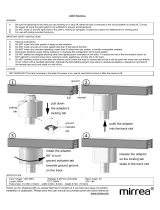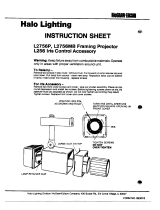
3
section 1
Introduction
MAC 500/E safety information....................................................................................................................................................4
section 2
Setup
Unpacking....................................................................................................................................................................................5
Installing or changing the lamp....................................................................................................................................................5
Powering the fixture.....................................................................................................................................................................6
Rigging.........................................................................................................................................................................................6
Connecting the serial link ............................................................................................................................................................7
section 3
Operation
Martin RS-485 control.................................................................................................................................................................9
DMX-512 control.........................................................................................................................................................................9
Controllable effects....................................................................................................................................................................10
section 4
Control Panel
Menu navigation ........................................................................................................................................................................12
Personality settings ....................................................................................................................................................................13
Address and protocol selection..................................................................................................................................................14
Readouts.....................................................................................................................................................................................14
Manual control...........................................................................................................................................................................15
Stand-alone sequences ...............................................................................................................................................................15
Utilities.......................................................................................................................................................................................16
section 5
Gobos and Color Filters
Gobo specifications....................................................................................................................................................................17
Gobo orientation and positions..................................................................................................................................................17
Changing rotating gobos............................................................................................................................................................19
Changing static gobos................................................................................................................................................................19
Default color filter positions......................................................................................................................................................20
Changing color filters.................................................................................................................................................................20
section 6
Maintenance and Basic Service
Accessing parts ..........................................................................................................................................................................21
Removing the printed circuit board ...........................................................................................................................................21
Replacing fuses..........................................................................................................................................................................22
Changing the XLR pin-out.........................................................................................................................................................22
Changing voltage and frequency settings ..................................................................................................................................22
Updating software......................................................................................................................................................................23
Changing lenses .........................................................................................................................................................................24
Replacing the lamp.....................................................................................................................................................................24
Optimizing lamp alignment .......................................................................................................................................................25
Installing the optional head shell safety wire.............................................................................................................................25
Maintenance schedule................................................................................................................................................................25
Cleaning.....................................................................................................................................................................................26
Lubrication.................................................................................................................................................................................26
section 7
Appendices
DMX protocol............................................................................................................................................................................27
Messages....................................................................................................................................................................................31
Troubleshooting ........................................................................................................................................................................32
Circuit board layout ...................................................................................................................................................................33
Specifications.............................................................................................................................................................................34






















